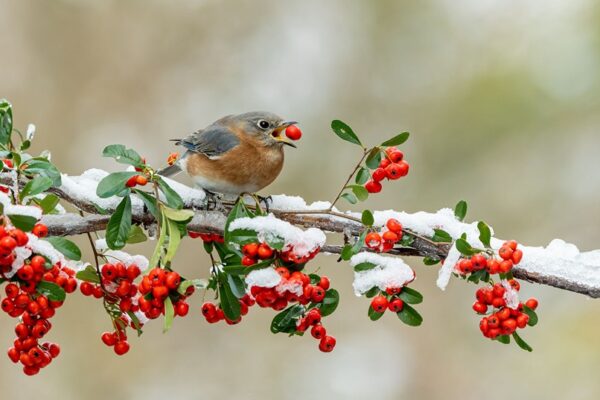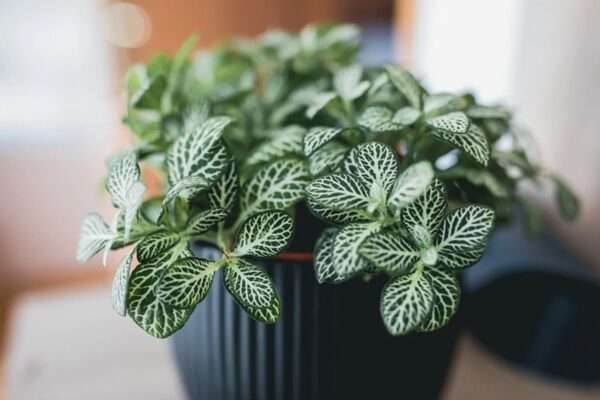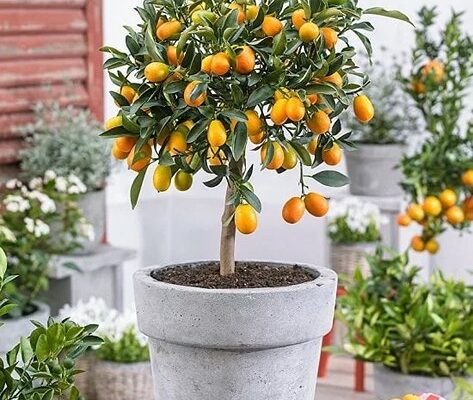The Fine Art of Growing Cuckoo Flower
Growing cuckoo flower goes beyond simple gardening; it is a fulfilling adventure where you get to see a small and fragile seedling turn into a vibrant and beautiful flowering plant, bringing joy and delight to your senses.
Cuckoo flower (Cardamine pratensis), also known as lady’s smock or milkmaid, is a perennial herbaceous plant in the Brassicaceae (cabbage) family. It’s a common sight in meadows, damp grasslands, and alongside riverbanks and streams in the UK. This delicate flower blooms from April to June, displaying pale purple, pink, or white flowers with four petals each. It grows up to 50cm tall and has long, slender leaves with serrated edges.
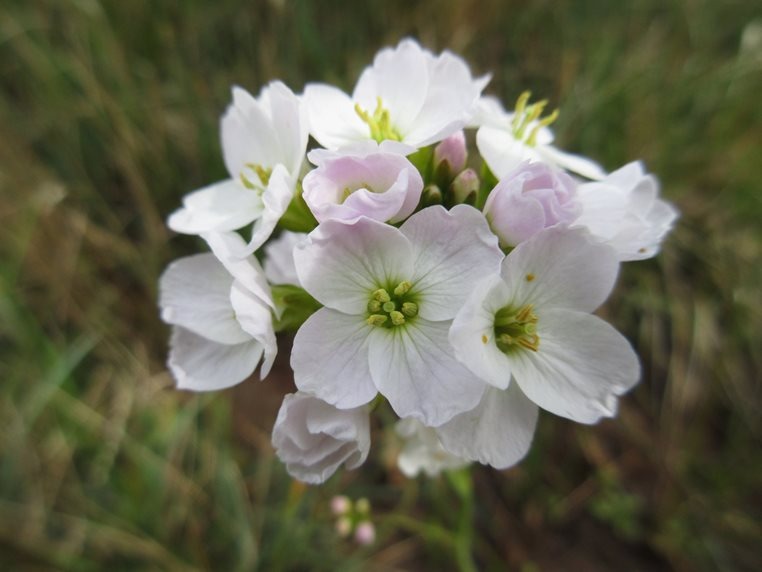
Attracting Wildlife with Cuckoo Flower
Cuckoo flower is an excellent choice for a domestic garden, especially for those looking to attract wildlife. Its flowers provide nectar and pollen for several species of pollinators, including bees, butterflies, and hoverflies. The plant’s nectar-rich blooms also attract other beneficial insects, such as lacewings and ladybugs. Moreover, cuckoo flower serves as a vital food source for the caterpillars of the orange tip (Anthocharis cardamines) and green-veined white (Pieris napi) butterflies. By cultivating cuckoo flower in your garden, you can contribute to supporting local biodiversity and promoting a healthy ecosystem.
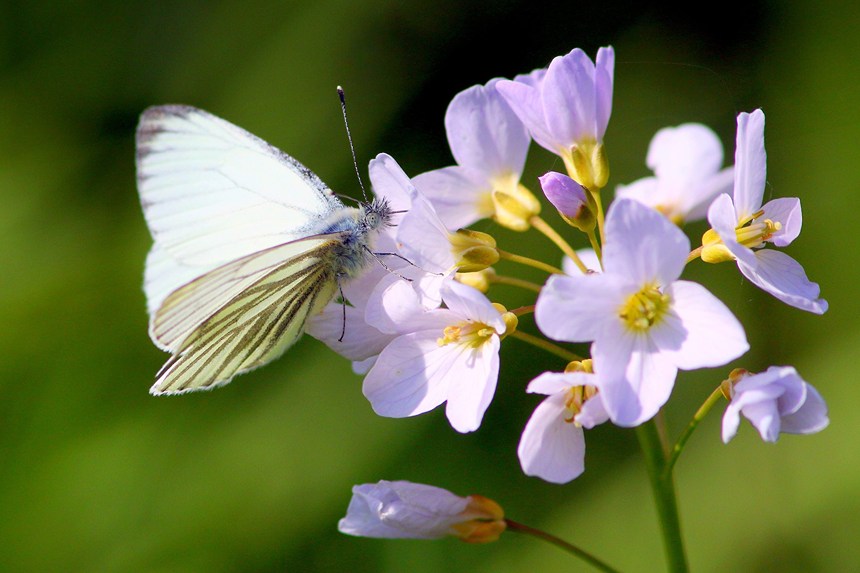
Growing Cuckoo Flower
To grow cuckoo flower successfully, it is recommended to plant it in moist soil and provide partial shade to full sun. The plant prefers loamy or sandy soils that retain moisture well. Ensure that the soil is consistently moist but not waterlogged. Adequate drainage is essential to prevent root rot. Adding organic matter, such as compost or well-rotted manure, to the soil before planting can help improve its moisture retention and nutrient content.
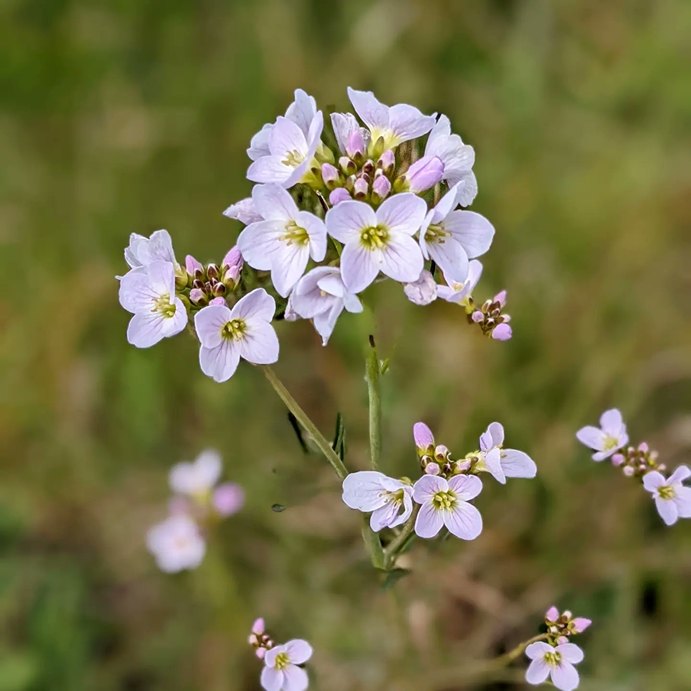
Ideal Growing Conditions for Cuckoo Flower
Cuckoo flower thrives in moist to wet environments and is often found in meadows, damp grasslands, and near water bodies. It prefers soil with a pH range of 5.5 to 7.5. If your garden has a higher pH, adding organic matter or using acidic mulches can help create a more suitable growing environment. While cuckoo flower can tolerate full sun, providing partial shade, especially during the hot afternoon hours, can prevent the soil from drying out too quickly. Planting cuckoo flower near a pond, stream, or in areas with high humidity can mimic its natural habitat and provide optimal growing conditions.
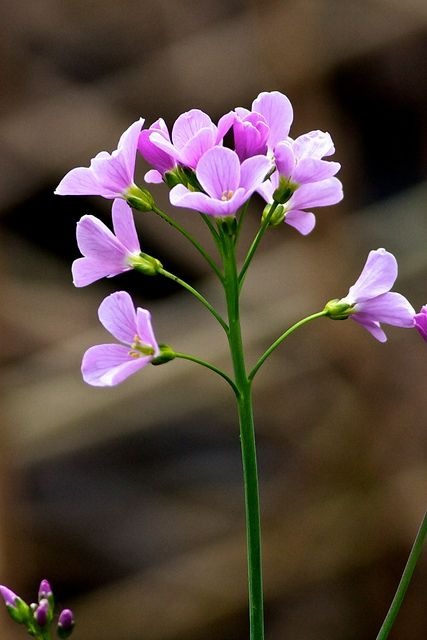
Planting Cuckoo Flower
Cuckoo flower can be planted either from seeds or young plants. If starting from seeds, it’s best to sow them in either spring or autumn. Autumn sowing allows for natural stratification during the winter months, which can enhance germination rates. Start the seeds in trays or pots filled with moist seed compost and cover them lightly with a thin layer of soil. Place the trays in a cool location or a cold frame to allow for gradual growth. Once the seedlings have developed several leaves, they can be transplanted into their permanent positions in the garden.
If you prefer to use young plants, they can be purchased from nurseries or propagated through division (discussed later in the text). When planting cuckoo flower, dig a hole slightly deeper than the plant’s root ball and ensure that the crown is level with the soil surface. Gently firm the soil around the plant and water thoroughly to settle it in place. Spacing between plants should be around 30-45cm to allow for proper airflow and growth.
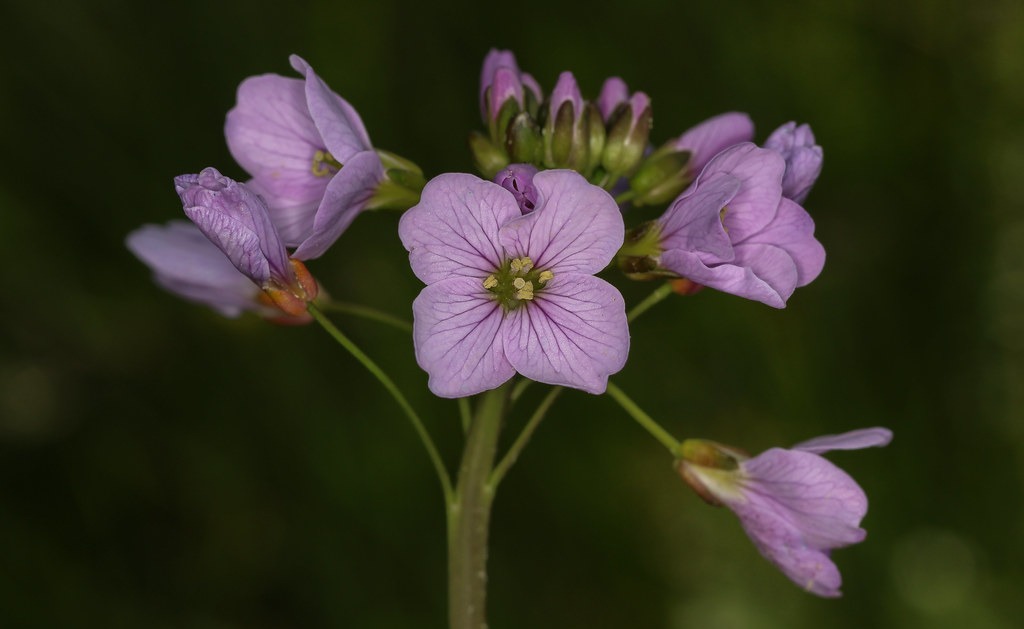
Caring for Cuckoo Flower
Once cuckoo flower is established, it requires relatively low maintenance. Consistently moist soil is essential, especially during the flowering season. Water the plant regularly, particularly during dry spells, to prevent the soil from drying out. Watering in the morning or evening is preferable to reduce evaporation and allow the foliage to dry before nighttime, which can minimize the risk of diseases. Applying a layer of organic mulch around the plants, such as bark chips or compost, can help retain moisture in the soil and suppress weed growth.
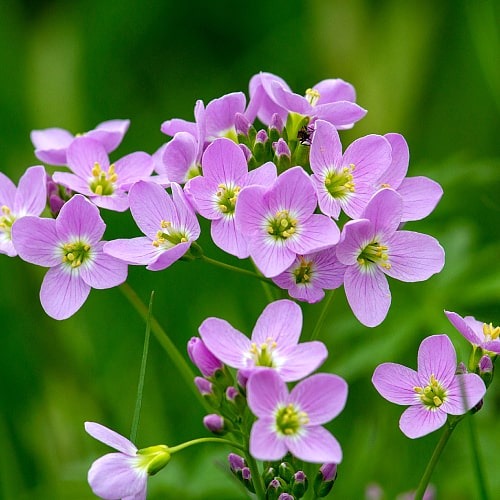
Fertilizing cuckoo flower is generally not necessary, as it can obtain sufficient nutrients from the soil. However, a light application of compost or organic matter in early spring can provide a nutrient boost and support healthy growth. Avoid excessive use of nitrogen-rich fertilizers, as this can promote lush foliage growth at the expense of flower production.
Deadheading spent flowers can help encourage more blooms throughout the season and prevent the plant from diverting energy into producing seeds. Simply remove the faded flowers by pinching or cutting them off at the base of the stem. Additionally, removing any yellowing or damaged foliage can enhance the plant’s overall appearance and prevent the spread of diseases.
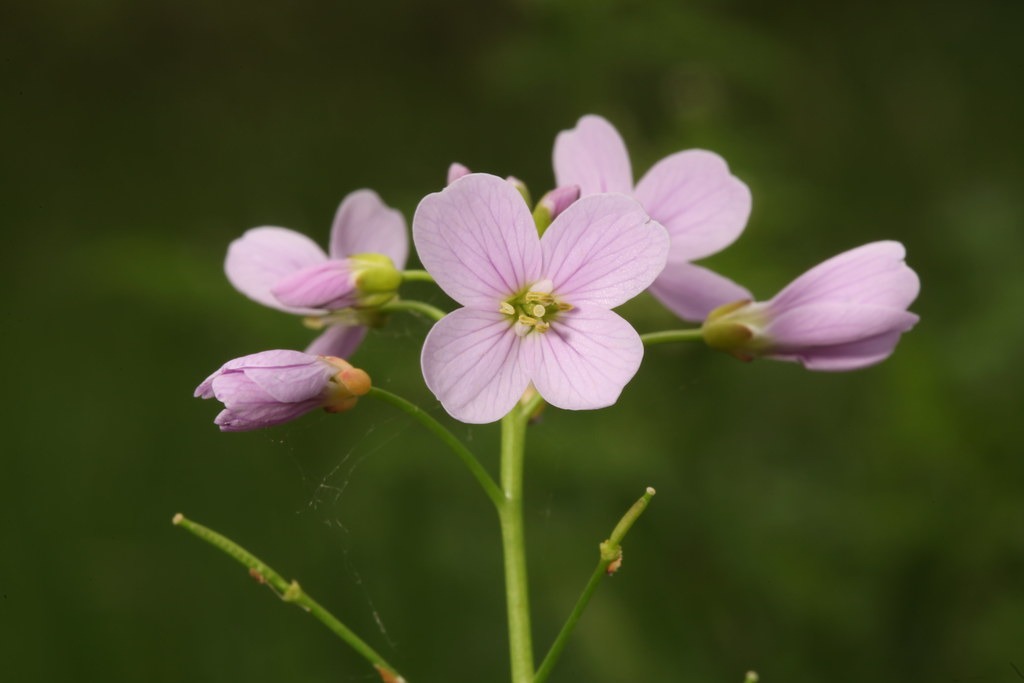
Pruning Cuckoo Flower
Cuckoo flower does not require regular pruning. However, after the flowering period, you may want to cut the plant back to about 5cm above the ground. This can help tidy up the plant and encourage fresh growth. If you’re growing cuckoo flower to support butterfly populations, it’s important to note that both the orange-tip and green-veined white butterflies overwinter as pupae on or near their food plants. To provide a suitable habitat for these butterflies, it’s best to leave the plants intact during winter and avoid extensive pruning until the new growth begins in spring.
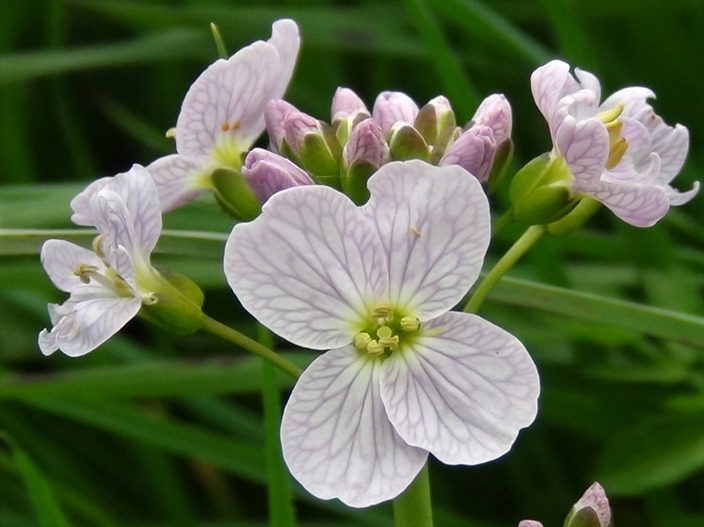
Propagation of Cuckoo Flower
Cuckoo flower can be propagated through seeds or division. Collecting ripe seed pods in autumn allows for sowing them in seed trays or directly in the desired area. If sowing in seed trays, lightly cover the seeds with compost or vermiculite and keep them in a cool location. Once the seedlings are large enough to handle, they can be transplanted to their permanent positions.
Division is another method of propagation that can be done in spring or autumn. To divide cuckoo flower, carefully dig up an established plant and gently separate the clumps of roots. Each clump should have a portion of the crown and a sufficient number of healthy roots. Replant the divided clumps in a new location, water thoroughly, and ensure they are well-maintained during the initial establishment phase.
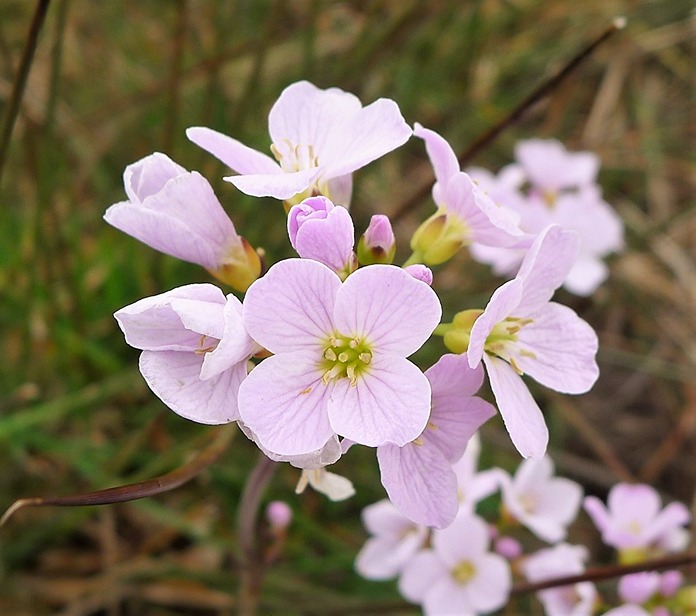
Pests and Diseases
Cuckoo flower is generally a hardy plant and not commonly troubled by pests or diseases. However, it may occasionally attract aphids, caterpillars, or flea beetles. Monitor the plants regularly and take appropriate measures, such as handpicking caterpillars or using organic insecticides, if necessary. Good garden hygiene, including removing fallen leaves or debris, can also help prevent pest infestations. As for diseases, cuckoo flower is relatively resistant, but it can occasionally develop fungal issues like powdery mildew or leaf spot. Proper spacing between plants, providing adequate airflow, and avoiding overhead watering can help minimize the risk of these diseases.
Tips for Buying Cuckoo Flower
When purchasing cuckoo flower, it’s important to choose healthy and vigorous plants. Select specimens with lush foliage, sturdy stems, and no signs of pests or diseases. If possible, opt for plants that are just starting to flower, as it indicates their establishment and enhances the chances of thriving in your garden. Consider the conditions in your garden, as cuckoo flower prefers moist soil and partial shade. If your garden tends to be dry or receives ample sunlight, it may be necessary to explore alternative plant options.
